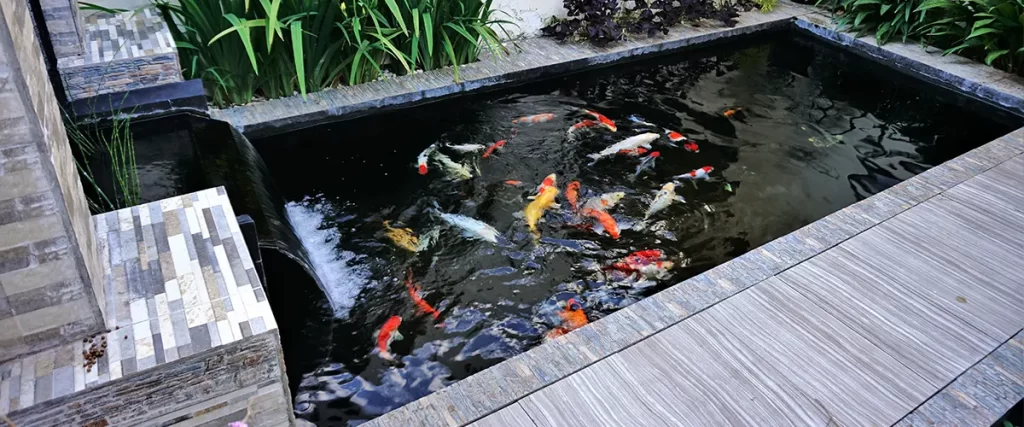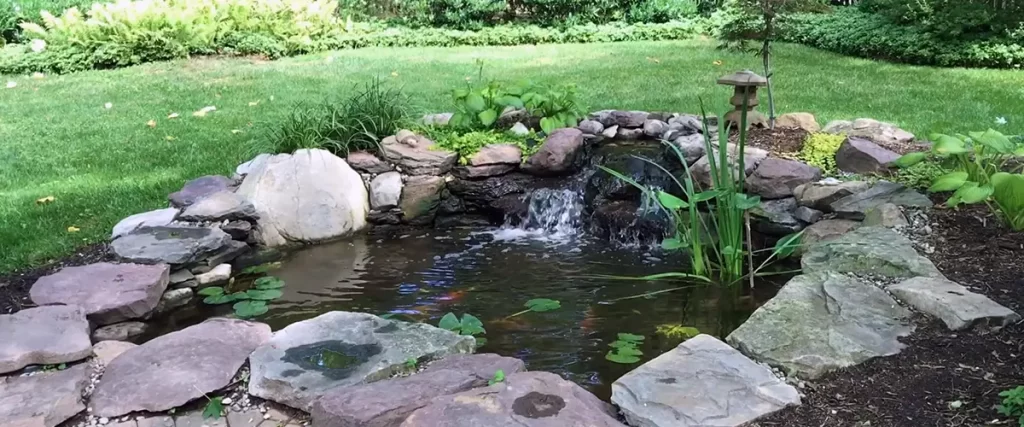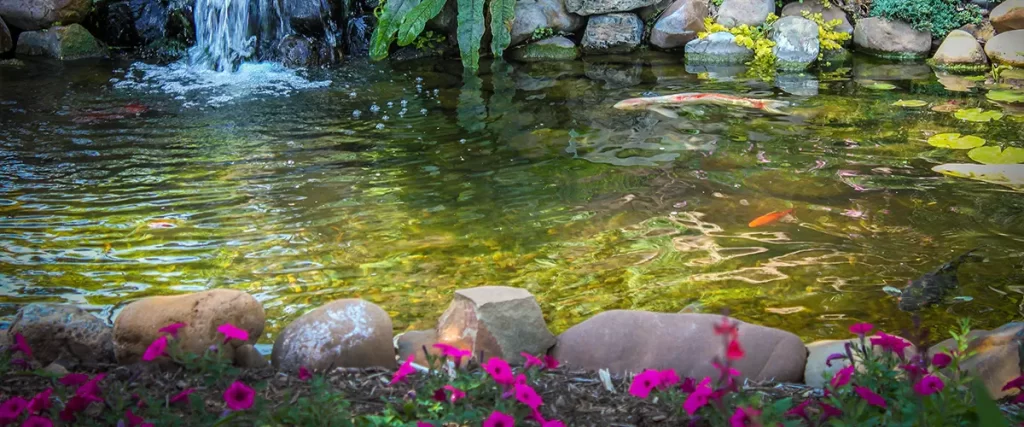If you’ve ever looked out at your backyard and imagined a tranquil pond filled with koi fish, native plants, or maybe even a small waterfall, you’re definitely not alone.
Florida homeowners love the idea of adding a pond, not just for beauty, but for wildlife, relaxation, and even property value.
But before you break ground and start digging, there’s one critical thing to understand: Florida pond building regulations.
Here’s the truth: Florida isn’t just sunshine and palm trees. It’s a unique ecosystem with a mix of wetlands, aquifers, and environmental protections that can complicate even a simple backyard pond project.
This guide breaks it all down in plain English. No legal jargon, no fluff. Just the facts (and the insider insights) you need to confidently move forward.

Why Pond Building Regulations Matter in Florida
Florida’s environment is different. With high water tables, year-round rainfall, and sensitive ecosystems, it’s no surprise the state has strict regulations when it comes to disturbing the land, especially when water is involved.
As a homeowner, you’re probably thinking, “It’s my land, why do I need permission to build a pond?” Totally valid question. But here’s why the state cares:
- Water Quality Protection – Your pond can impact nearby wetlands, lakes, or drinking water sources.
- Flood Control – Improperly built ponds can increase flood risk for your home or your neighbors.
- Wildlife Conservation – Florida is home to tons of protected species, and disturbing their habitat (even unintentionally) can result in fines.
So, yes, building a pond is possible—and awesome! But doing it the right way ensures you’re not hit with surprise stop-work orders or environmental violations.
Do You Need a Permit to Build a Pond in Florida?
Short answer: Probably, yes.
Whether you need a permit depends on a few factors:
- The size of the pond
- The purpose (aesthetic, stormwater, irrigation, aquaculture)
- Proximity to wetlands or protected areas
- Excavation depth and volume
- County and city regulations
Most backyard ponds fall under local (county or municipal) jurisdiction, but if your project is big enough or near wetlands, the Florida Department of Environmental Protection (FDEP) or the Water Management District (WMD) may need to get involved too.
Helpful Tip: Always check with your local building department before you start planning. You can’t afford to guess on this one.
Key Florida Agencies Involved in Pond Regulations
- Florida Department of Environmental Protection (FDEP):
Handles ponds that may affect wetlands or surface waters. Learn more: floridadep.gov - Water Management Districts (WMD):
Florida is split into five districts. Your project might fall under:
- South Florida Water Management District
- St. Johns River Water Management District
- Southwest Florida Water Management District
- Northwest Florida Water Management District
- Suwannee River Water Management District
Find yours here: floridawater.com
- Your Local County Environmental Office or Planning Department:
These are the people who usually enforce zoning codes, setbacks, and land use regulations.
Common Pond Building Regulations in Florida
Every jurisdiction is a little different, but these are the most common rules you’ll run into across the state:
1. Setbacks
Most counties require a minimum distance between your pond and:
- Property lines (often 25–50 feet)
- Septic systems
- Wells
- Structures
2. Pond Depth and Size
- Small garden ponds (under 1/4 acre) may be exempt from permitting—but always confirm.
- Excavation over a certain volume (often 100 cubic yards) may trigger a permit.
3. Wetland Protections
- If your land is near or contains wetlands, you must have an environmental assessment before digging.
- You may need a dredge and fill permit from FDEP.
4. Stormwater Management
- In some areas, your pond may be regulated as a stormwater retention or detention basin.
- That means engineering plans and ongoing maintenance could be required.
5. Excavation Regulations
- Florida law treats any digging that affects more than a minimal volume of soil as “development.”
- That means you could be subject to erosion controls, sediment barriers, and inspections.

Can You Build a Pond Without a Permit in Florida?
In very limited cases—yes. But only if:
- The pond is under a specific size (typically under 10,000 sq. ft.)
- It’s not in a floodplain or wetland
- It doesn’t impact stormwater flow or adjacent properties
Even then, you might still need to notify your county or fill out a permit exemption form. In general, it’s better to assume you’ll need some level of approval and work backward from there.
Tips for Getting Approved Faster
- Hire a surveyor or environmental consultant to assess your property
- Draw a site plan that shows the pond location, dimensions, setbacks, and elevations
- Talk to your neighbors, especially if your pond is near the property line
- Be proactive with your local permitting office—they’ll tell you exactly what’s required
Remember, getting ahead of the paperwork saves you time and money later on.
Types of Ponds Allowed in Florida Residential Areas
Here are the most common types of ponds homeowners build—and what to consider:
Koi or Decorative Ponds
- Usually shallow and small
- Need filtration and water circulation
- Easier to get permitted, especially if above-ground
Wildlife or Natural Ponds
- Designed to attract birds, frogs, turtles
- Often use native plants and no filtration
- May trigger more environmental scrutiny
Stormwater Ponds
- Used to manage runoff
- Often required in new developments
- Must be maintained per engineering specs
Irrigation Ponds
- Serve as water sources for landscaping
- Need water withdrawal permits if pumping from them
Best Pond Liner and Equipment Manufacturers
If you’re building a pond in Florida, you want materials that can handle heat, moisture, and shifting soil. These manufacturers are industry leaders in durable, high-performance pond products.
- Firestone PondGard® – Known for its high-quality EPDM liners that resist UV and root damage.
- AquaScape Inc. – Offers complete pond kits with filtration systems, pumps, and lights.
- Pondliner – Specializes in customizable liner sizes for large and small ponds.
- EasyPro Pond Products – Offers aeration systems, waterfall kits, and aquatic plant supplies.
- Atlantic Water Gardens – Supplies top-tier skimmers, pumps, and biological filtration units.

Florida Pond Building FAQs
Can I build a pond on my property in Florida without a permit?
In some rural or unregulated areas, you might not need a permit for very small, shallow ponds. But most residential areas do require one. Check with your county first.
How deep can I legally dig my pond?
It depends on soil type and location, but most residential ponds in Florida are limited to around 6–8 feet deep unless specifically engineered.
Will a pond increase my property taxes?
Possibly. If it’s considered an improvement (like a large koi pond or retention pond), your property value—and taxes—could go up.
Can I stock my pond with fish?
Yes! Just make sure you’re using legal, non-invasive species. Florida Fish and Wildlife has a full list of permitted fish.
What if I already built a pond without a permit?
Contact your local building or environmental department immediately. It’s better to self-report than wait for a violation notice.
Final Thoughts: Build It Right, Enjoy It for Life
Adding a pond to your Florida property can be a beautiful, eco-friendly upgrade. But doing it right means following the rules, protecting the environment, and keeping yourself out of legal trouble. Whether you’re just starting or halfway through planning, don’t skip the permitting process.
If you’ve got questions about the next step in your pond building project, or you want help planning a compliant and stunning backyard pond, contact us at (407) 480-0713. We’ll walk you through what’s needed and make sure you avoid costly mistakes.
